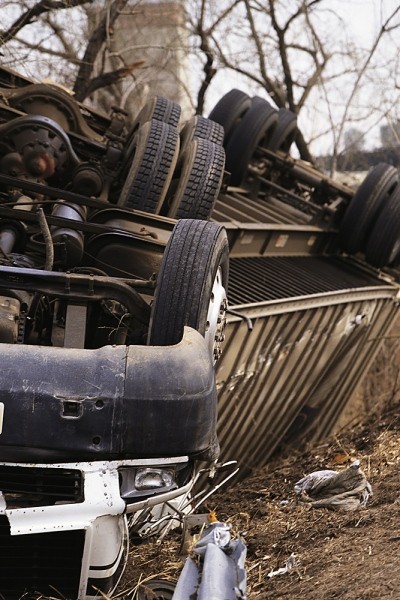Safety Management
Safety Management
Proper heavy vehicle collision investigations should go far beyond looking at the individual driver. The trucking company and its policies are an integral part in the process of putting a safe vehicle and driver on the road. A thorough investigation of heavy vehicle collisions requires detailed knowledge of the requirements that the Federal Motor Carrier Safety Regulations (FMCSR) place upon both the motor carrier and the individual driver. A heavy vehicle specialist with specialized knowledge, training, and experience is often required for a complete understanding of heavy vehicle collisions.
Safety management is an essential component of any trucking operation. Motor fleets without effective safety programs may be guilty of excessive and unnecessary financial risk, regulatory non-compliance, and social irresponsibility. Understanding a company’s safety program, or lack thereof, can be the key to demonstrating why a driver operated the vehicle the way he/she did; such as, improper loading, unsafe driving practices, or operating faulty equipment. The consequences of non-compliance can be severe, ranging from fines and downtime to vehicular collisions resulting in many cases unnecessary loss of life.
It is important to understand that placing a driver behind the wheel means more than just ensuring that the driver has a CDL. Heavy truck operators are – and need to be – professional drivers. A great deal of knowledge is required to properly evaluate a driver’s level of skill and knowledge, and to ensure that the driver is properly qualified and trained to use the equipment entrusted to him.
Hiring and qualifying new drivers, providing continuing training, and keeping company employees (drivers, shop personnel, and management) up to date on changing policies and regulations requires a staff dedicated to safety. It is mandatory to ensure that proper records are kept and that all information on safety and compliance is passed on to the drivers.
While trucking companies are not specifically required by federal regulations to have a safety department or safety director, they are ultimately required to comply with the Federal Motor Carrier Safety Regulations which covers a variety of issues including but not limited to hours of service (part 395), drug and alcohol testing (part 382) and driver qualifications (part 391).
Many companies have a printed safety manual. However, reading a company’s safety manual alone will not provide a complete understanding of a company’s safety program and policies. The company’s involvement does not end simply with documentation and policies for drivers. Knowing the appropriate questions to ask to determine how well the company’s practices match their policies will provide a better insight into how the company really operates. Drivers in the most well run companies have collisions. Both the company’s and the driver’s actions following the collision can reveal a great deal about the company’s commitment to safety.
When a collision does occur, a knowledgeable heavy vehicle specialist can identify the required records the trucking company must keep as well as ancillary documents; such as, the driver handbook that will provide a more complete picture of the driver and the company that employs him. Some of these documents include:
- Driver qualification files
- Vehicle maintenance records
- Driver inspection forms
- Logs
- Roadside inspection reports
- Repair orders
- Bills of lading
- Toll tickets
- Controlled substance/alcohol reports
- Safety meeting minutes and attendance sheets.
While the truck driver is often the most visible member of the trucking company, everyone in the company, including management, truck mechanics, dispatch and routing personnel, must be involved to put a well-trained driver operating safe equipment on the road.
Driver Qualification
The trucking industry and the federal government have mandated a qualification process that absolutely must be followed. These steps are not just technical violations or paper regulations, they are in place and must be followed to ensure that companies know, as well as they can, who is driving their commercial motor vehicle on the public highways.
A company that hires a driver for a commercial vehicle has a huge responsibility to the safety of the general public. Part of that responsibility is to make sure that the company puts the safest possible driver on the road in a commercial vehicle by qualifying the driver before he/she drives on the highway.
The qualification process is just that, a process of screening the driver’s background, experience, accidents, citations, previous employment and previous addresses. All sections of the application form must be filled out completely fully to allow a motor carrier to check all references. A company must check the applicants’ previous experience with a commercial vehicle before he/she is hired to drive.
Large gaps in employment history or former jobs not listed could be an indication that the driver is trying to hide a bad employment record or a company that he/she has had problems with.
The section for accidents and tickets indicates what kind of driver the applicant has been in the past. A driver who has numerous tickets or accidents in the past is not a good candidate and trucking companies should not hire anyone with this type of record; and in many cases the motor carrier’s insurance company will not allow them to hire drivers with multiple accidents or tickets.
The process of qualifying a driver for a commercial vehicle is sometimes trivialized and oftentimes not followed. If companies and motor carriers considered their duty to the safety of the general public and the liability incurred when putting an unqualified driver out on the road, they would most certainly spend the time needed to ensure each and every driver in their fleet is qualified according to regulations and industry standards.
Employment Application
FMCSR part 391.21 says that a driver SHALL not drive a motor vehicle unless he/she has completed and furnished the motor carrier the employs him/her with an application for employment that meets the requirements of this section.
Hours of Service
Under the new hours of service rules, Section 395.8 says that a driver of a property carrying commercial motor vehicle cannot drive more than 11 cumulative hours following 10 consecutive hours off duty. A property carrying commercial driver cannot drive for any period after the end of the 14th hour after coming on duty following 10 consecutive hours off duty. This rule became effective on January 4, 2004.




